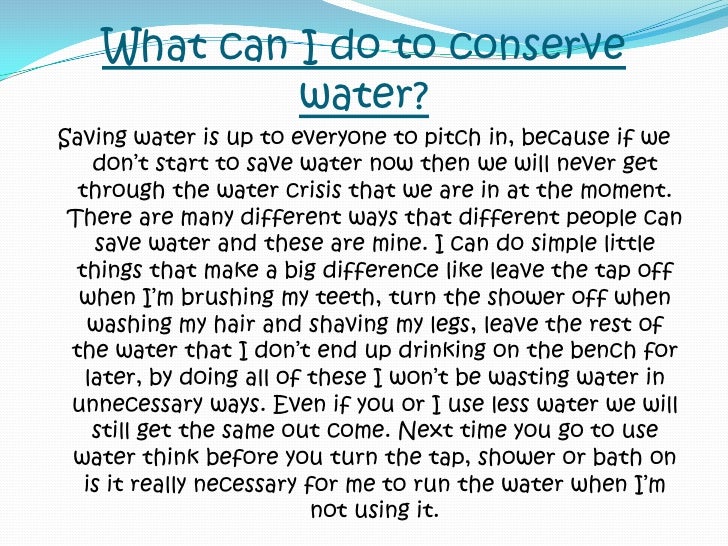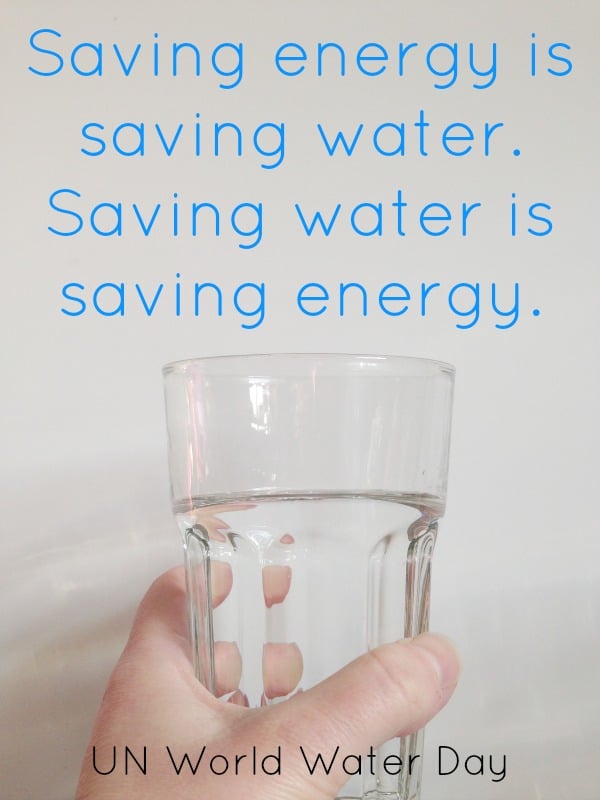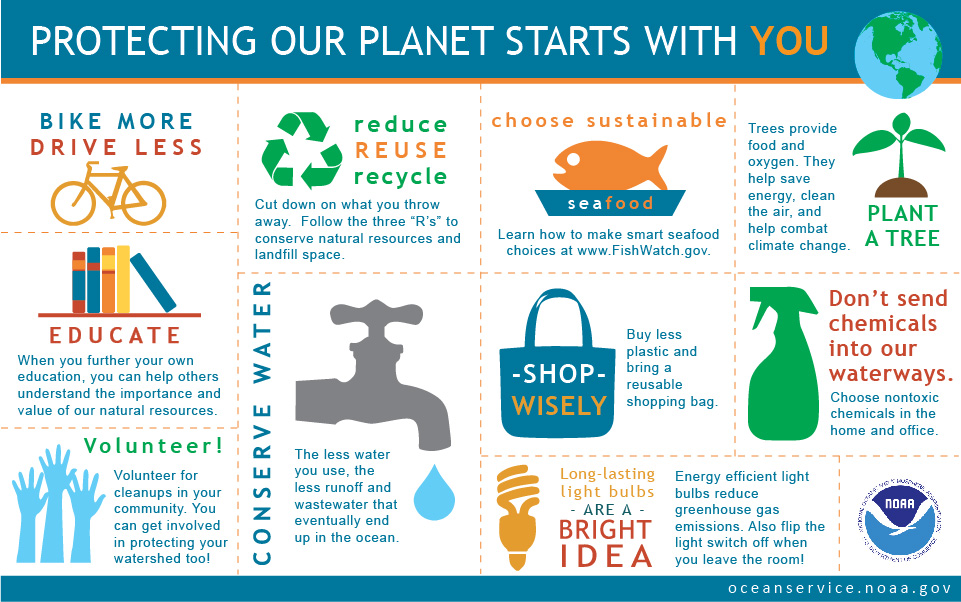Table of Content
By protecting plants and soil from the afternoon sun, shade trees help conserve water. When watering the lawn, do it long enough for the moisture to soak down to the roots where it will do the most good. A light sprinkling can evaporate quickly and tends to encourage shallow root systems.

These are a great way to catch excess rainwater, and they can keep your property from being inundated with water during a big storm. You can then use what you collected as water for plants and outdoor cleaning tasks instead of using water from a faucet. This saves energy because less water has to be treated and it saves you on water bills. Low-flow water fixtures save billions of gallons of water each year. In fact, it’s been a federal law since 1992 that showerheads cannot exceed 2.5 gallons of water per minute.
Check for Leaks in Pipes, Hoses, Faucets and Couplings
A poorly-sealed pipe or leaky toilet can waste up to 90 gallons of water a day, so resolving these problems can save a lot of water in the long run. Choose efficient cleaning methods; dirty dishes end up in the sink more than once and can add millions of gallons of water to your monthly water bill. All of you might think that water is a renewable resource. And there’s so much of it, with 71% of Earth’s surface area covered by water.

In some communities, costly sewage system expansion has been avoided by community-wide household water conservation. How many times have you left the tap running while brushing your teeth or washing your hands & face or shaving? Instead of throwing eggshells and leftover vegetables in the garbage disposal, save water in your kitchen and your lawn by composting!
How Does UV Technology Work in Waste Water Treatment
Adding organic material to your soil will help increase its absorption and water retention. Areas that are already planted can be ‘top dressed’ with compost or organic matter every year. Turn a healthy dose of compost into new garden beds when preparing the soil for planting. Leaks outside the house may not seem as bad since they’re not as visible.

For partial loads, adjust water levels to match the size of the load. The most effective way to save water is to upgrade to efficient fixtures. But there are other ways to help reduce the amount of water you use at home. Cigarette butts are the worst contaminant of oceans and the most littered item in the world! When cigarette butts are thrown on the floor, they will most likely be washed into storm drains and end up in the sea.
DoorDash is the cheapest service for small orders
US gal (0.95 L) of water down the drain, so this definitely adds up over time. Replace damaged pipes and leaky faucets to avoid wasting water. When you visit parks with water resources, learn about the ways water affects these ecosystems and explore the myriad of ways to enjoy water in your national parks. Some sunscreens can alter the quality of water and can have a negative effect on living things, especially in coral reef communities. By switching to a mineral based sunscreen, you are helping to reduce the chemicals that can harm ocean life! Find out how to choose a reef-friendly (and ecosystem-friendly) sunscreen.

Therefore, if you get a showerhead with a low enough flow, you can theoretically prolong your shower while also respecting the environment. There’s no definite answer to this question, but it’s important to note that households aren’t the biggest consumers of water in the U.S. The agricultural industry uses up to 70 percent of clean drinking water globally. This makes sense since plants need water to grow and produce, and animals need water to drink to remain alive and healthy. That’s why today, we’ll be sharing some easy and effective ways to save water outside your home and preserve our nation’s water resources.
According to the Environmental Protection Agency , the average U.S. family of four wastes 180 gallons of water a week from household leaks, or 9,400 gallons per year. For some perspective, that’s enough water to fill a 20-foot round swimming pool that’s four feet deep. We’ve gathered some ways to help conserve water at home. We recommend picking a few to start out with, and gradually adding more to your conservation list! Deciding on just a few small challenges can make an impact on water usage, reducing hundreds of gallons of water each year.

Bathing your pets in a dry area of your yard can help provide more moisture to your lawn. Contrary to what you might think, these automated systems are remarkably affordable and easy to install. Some states even offer rebates due to their ability to help homeowners conserve water. Make sure to use collected rainwater for gardening or washing purpose. Some people are hesitant to install a low-flow shower head, fearing it won’t provide adequate water pressure. The difference in water pressure is negligible, though, and you probably won’t notice any real difference other than a lower monthly water bill.
Position your sprinklers so water lands on the lawn or garden, not on paved areas. If you are planting a new lawn, or overseeding an existing lawn, use drought-resistant grasses such as “Eco-Lawn”. Many beautiful shrubs and plants thrive with far less watering than other species. Replace herbaceous perennial borders with native plants. Use rain barrels or a catchment system to capture valuable rainwater from your roof. Plants prefer untreated water, so your garden will be healthier while you cut your water bill.

If using a dishwasher, there is usually no need to pre-rinse the dishes. A running tap pumps out between six and twelve liters of water every minute. The sink or a washing-up bowl with just enough water is an effective way to loosen any dirt from your produce.
As such, one of the best methods of conservation of water that you can do right at home, right now, is cutting-down long showers. Put an inch or two of sand or pebbles in the bottom of a one liter bottle to weigh it down. Fill the rest of the bottle with water and put it in your toilet tank, safely away from the operating mechanism. In an average home, the bottle may save five gallons or more of water every day without harming the efficiency of the toilet. If your tank is big enough, you may even be able to put in two bottles.
Washing a car consumes more than 300 liters of water when done with a garden hose. It’s better to use a bucket of soapy water to clean the car than only rinsing the car with the hose. The next time you pull out your hose to clean your driveway or sidewalk, think about the hundreds of gallons of water you are wasting. Using a broom is an efficient and waterless way to clean around your home and to save money on water.
Some faucet leaks are easily spotted, but others take a little more effort to locate. Dry sinks and tubs thoroughly and allow to sit for an hour. To find leaks from faucet handles, dry the area around them before running water. You’ll see water collecting next to them if there’s a leak. To cut down on water waste, put an inch or two of sand or pebbles inside each of two plastic bottles.
During dry spells, you can stop watering altogether and the lawn will go brown and dormant. Once cooler weather arrives, the morning dew and rainfall will bring the lawn back to its usual vigor. This may result in a brown summer lawn, but it saves a lot of water. You can also replace thirsty Kentucky bluegrass lawns with Eco-Lawn, a grass seed mix that lowers your lawn’s water needs by over 85%. Running tap water to cool it off for drinking water is wasteful.
No comments:
Post a Comment